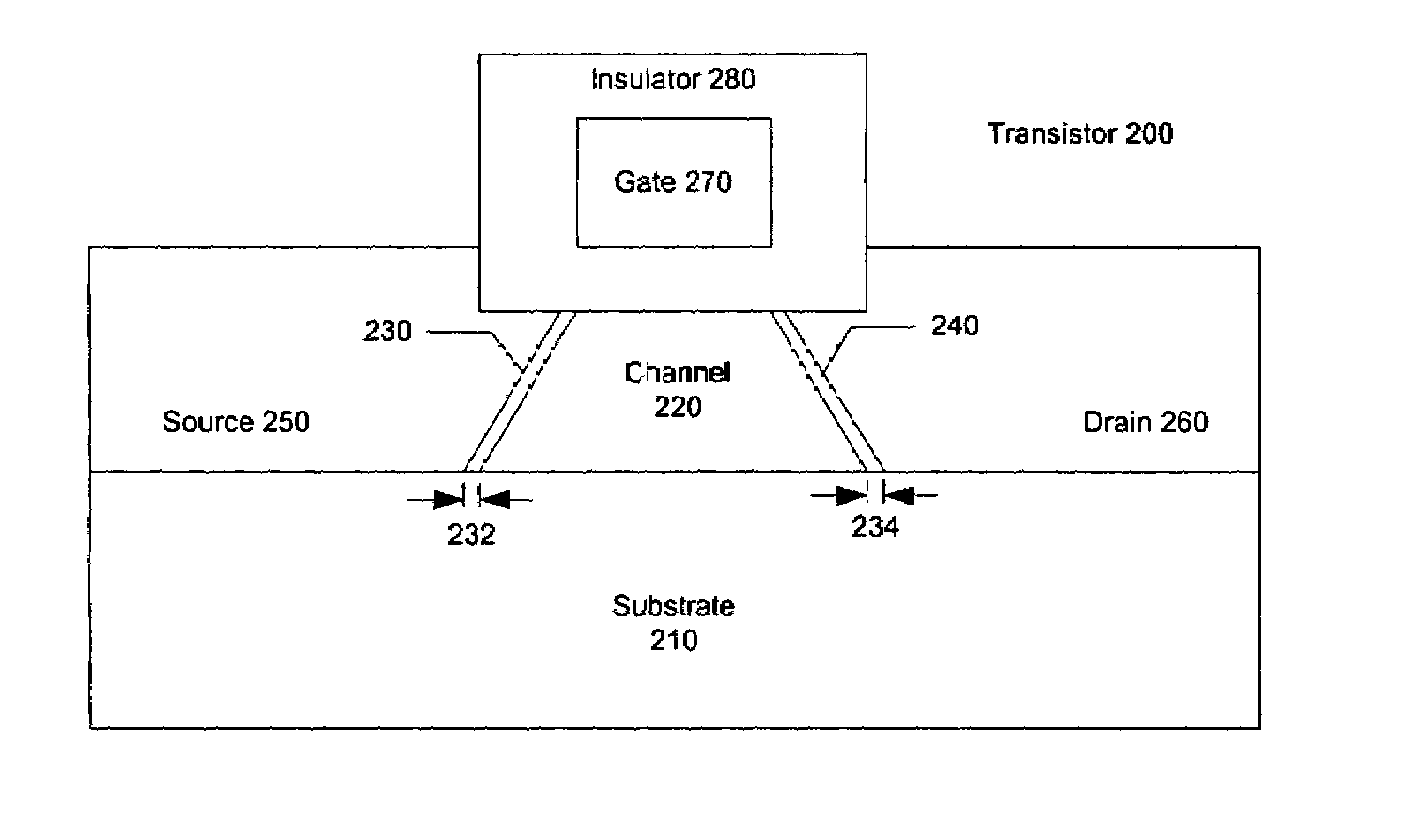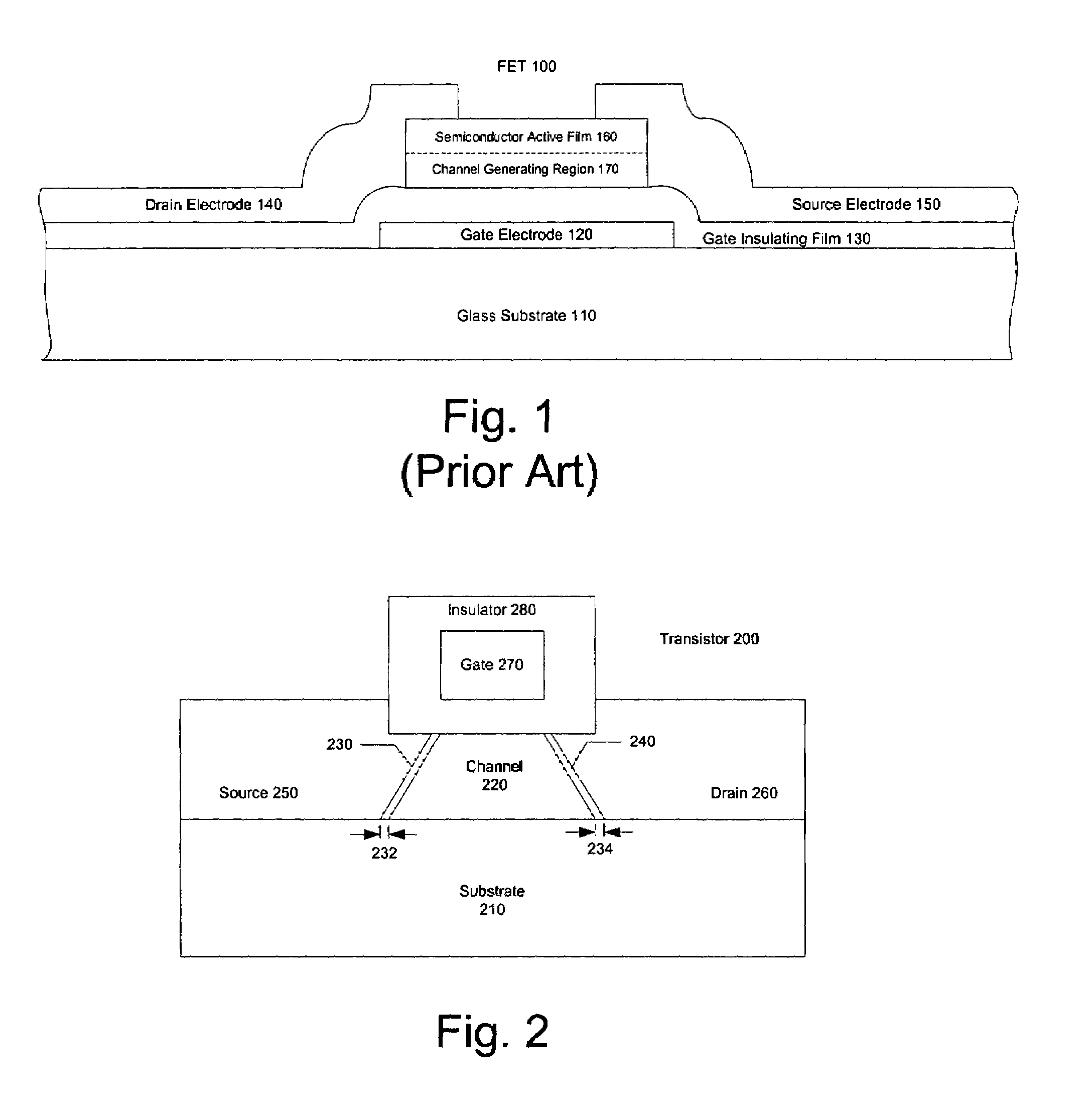Insulated gate field effect transistor having passivated Schottky barriers to the channel
a gate field effect and gate field technology, applied in the field of transistors, can solve the problems of long and largely unfruitful history, sidewall spacers were still limiting factors, poor sub-threshold slope from reduced coupling of gate, etc., and achieve the effect of reducing the effect of intrinsic surface states
- Summary
- Abstract
- Description
- Claims
- Application Information
AI Technical Summary
Benefits of technology
Problems solved by technology
Method used
Image
Examples
Embodiment Construction
[0030]The above-cited co-pending patent application describes processes for depinning the Fermi level of a silicon-based or germanium semiconductor (e.g., Si, SiC, SiGe, SiGeC, or Ge) at a metal-semiconductor junction as well as devices that use such a junction. As more fully discussed in that application, an interface layer is introduced between the semiconductor and the metal. The interface layer functions to passivate the semiconductor surface (that is, terminate dangling bonds that may otherwise be present at the semiconductor surface so as to assure chemical stability of the surface) and to displace the semiconductor from the metal so as to reduce the effect of MIGS.
[0031]As discussed more fully below, the present inventors have determined that for thin interface layers disposed between a metal and a silicon-based or germanium semiconductor (e.g., Si, SiC, SiGe, SIGeC, or Ge), so as to form a metal-interface layer-semiconductor junction, there exist corresponding minimum specif...
PUM
 Login to View More
Login to View More Abstract
Description
Claims
Application Information
 Login to View More
Login to View More - R&D
- Intellectual Property
- Life Sciences
- Materials
- Tech Scout
- Unparalleled Data Quality
- Higher Quality Content
- 60% Fewer Hallucinations
Browse by: Latest US Patents, China's latest patents, Technical Efficacy Thesaurus, Application Domain, Technology Topic, Popular Technical Reports.
© 2025 PatSnap. All rights reserved.Legal|Privacy policy|Modern Slavery Act Transparency Statement|Sitemap|About US| Contact US: help@patsnap.com



